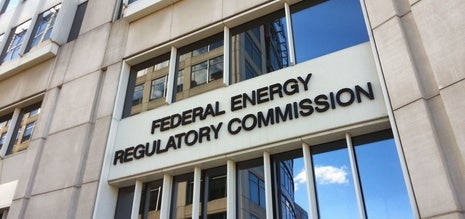Late last week, the D.C. Circuit Court of Appeals affirmed an important Federal Energy Regulatory Commission (FERC) Order, giving the agency a big win and aiding in the promise of a cleaner, smarter, and more efficient power grid.
By upholding FERC’s Order 1000, the court confirmed what many think is common sense: Because the power grid crosses state and utility boundaries, a coordinated planning approach to electricity transmission (that is, moving electricity from one place to another) is more efficient and cost effective than multiple entities planning in isolation.
Order 1000 opens the door for two big electrical grid improvements. First, the order helps spur a more efficient planning process, meaning less waste and better coordination in our energy system. Second, the order allows greater opportunity for clean energy resources like demand response, energy efficiency, and renewables. It does this, in large part, by ensuring that state policies like renewable portfolio standards are taken into account. Relying on more clean energy resources will improve air quality and the health of millions of Americans now harmed by dangerous air pollution while advancing our country’s energy independence and economic growth.
Unlocking efficiency through better planning
The power grid does not end neatly at state borders or within utility service areas. Rather, electricity is transported regionally, and the country’s grid is interconnected via long-distance transmission. This interconnected grid deserves an interconnected planning process. FERC Order 1000 does exactly this by requiring grid operators to coordinate and cooperate in determining whether, how, and what type of transmission is needed to deliver safe, affordable, and reliable electricity.
This regional approach to planning is especially important in areas that don’t have an Independent System Operator (ISO) or Regional Transmission Organization (RTO), like the Southeast and much of the West. Ensuring that grid planning is done at a regional level, rather than state or utility level, could result in a more cost-effective and efficient design.
Spurring clean energy solutions
The order also has big implications for clean energy resources, because it gives them a fair opportunity to be used when they’re able to provide power. By requiring regional transmission planning that incorporates state policies, clean energy resources that might not have been considered or planned for will have the opportunity to provide cost-effective electricity to power the grid. The court’s decision makes this clear:
The Commission expects that many States will require construction of new transmission infrastructure to integrate sources of renewable energy, such as wind farms, into the grid and that new federal environmental regulations will shape utilities’ decisions about when to retire old coal-based generators. Plans that fail to account for such laws and regulations, the Commission reasoned, would not adequately reflect future needs.”
Because FERC Order 1000 requires state policies like renewable portfolio standards be considered in planning, it helps ensure the transmission for clean energy resources will exist. Likewise, by including clean energy resources like demand response and energy efficiency in planning decisions, costly transmission won’t be built unless it’s actually needed.
The court’s decision was a big win for FERC, for a common-sense, efficient approach to grid planning, and for cleaner air and safer climate.










